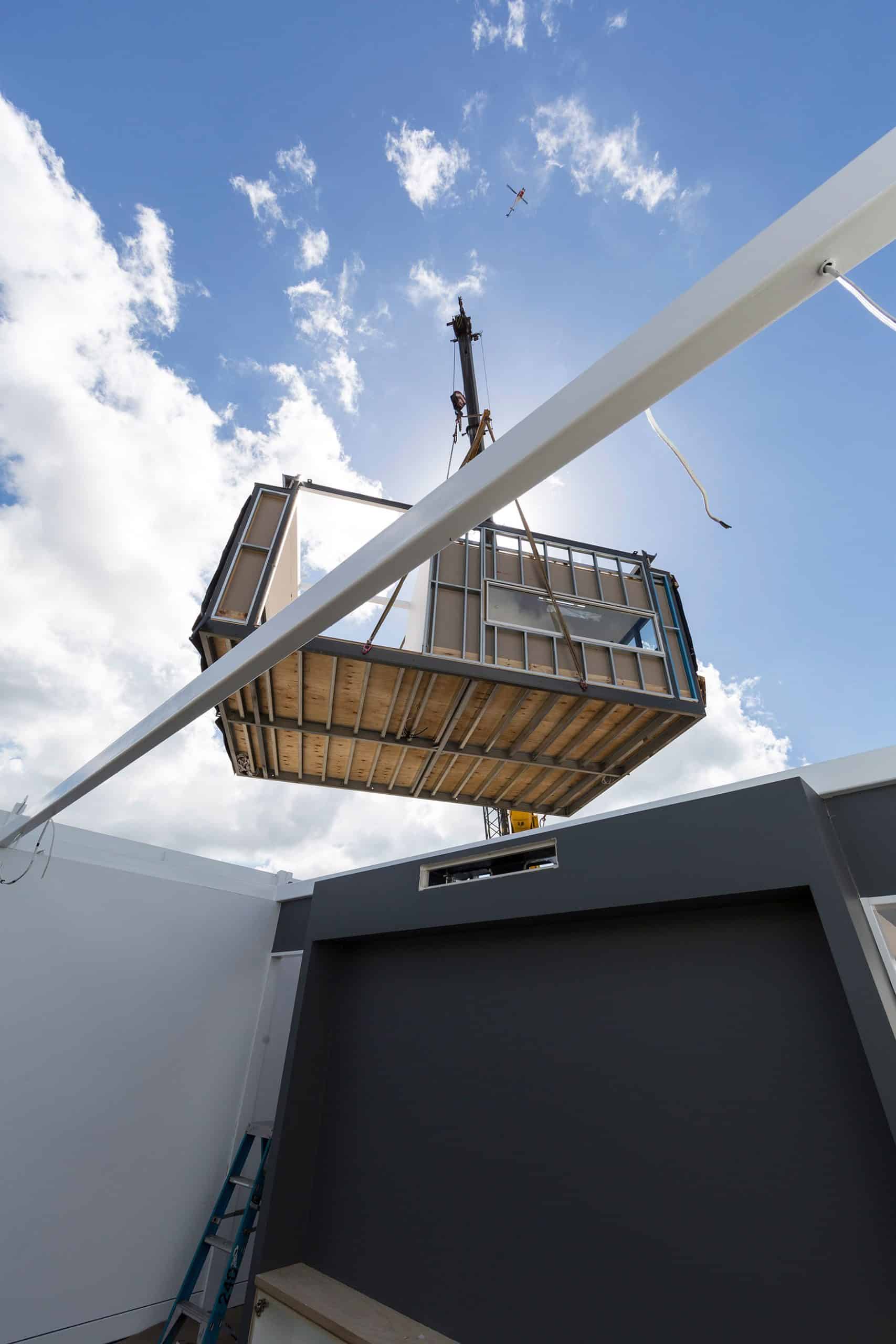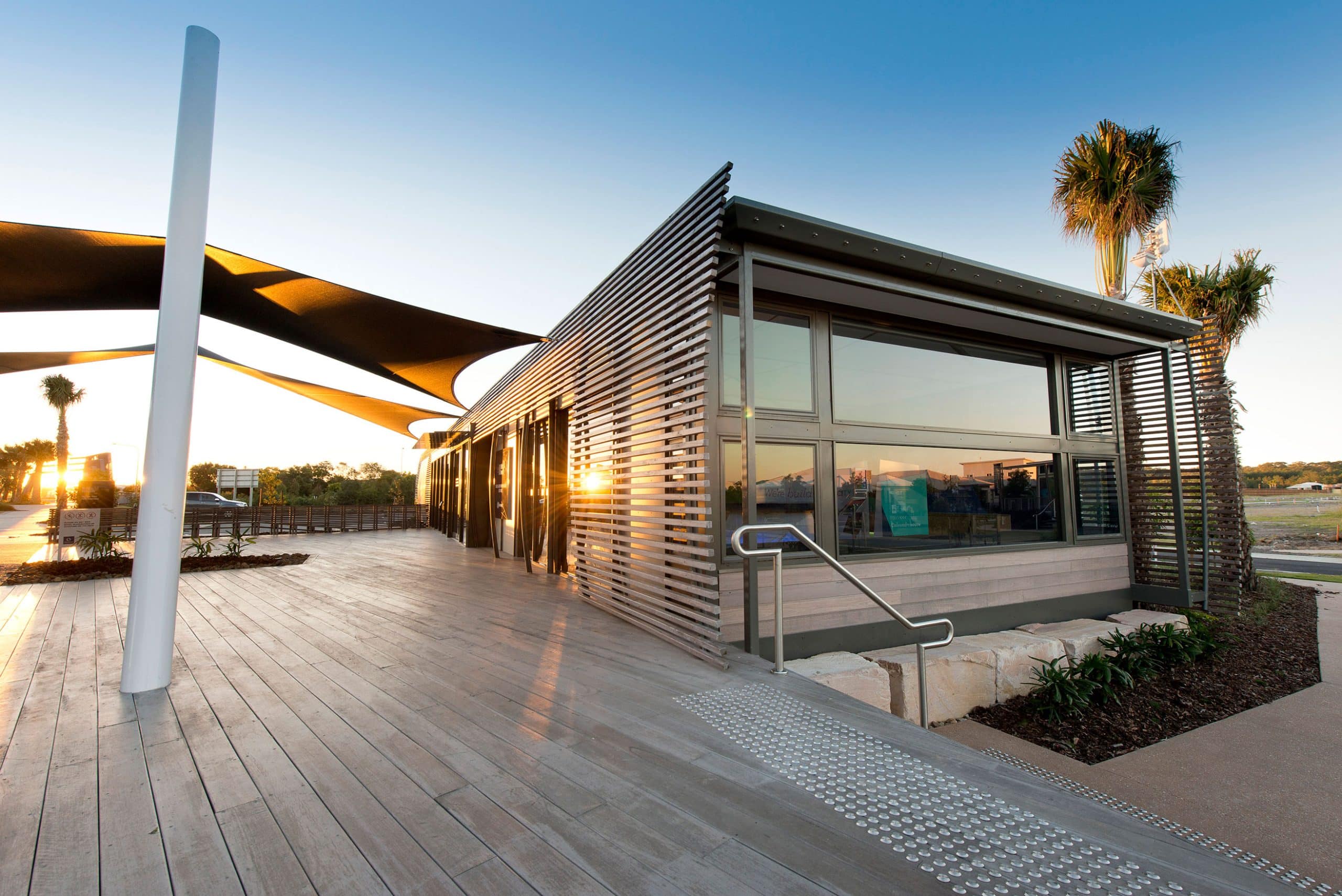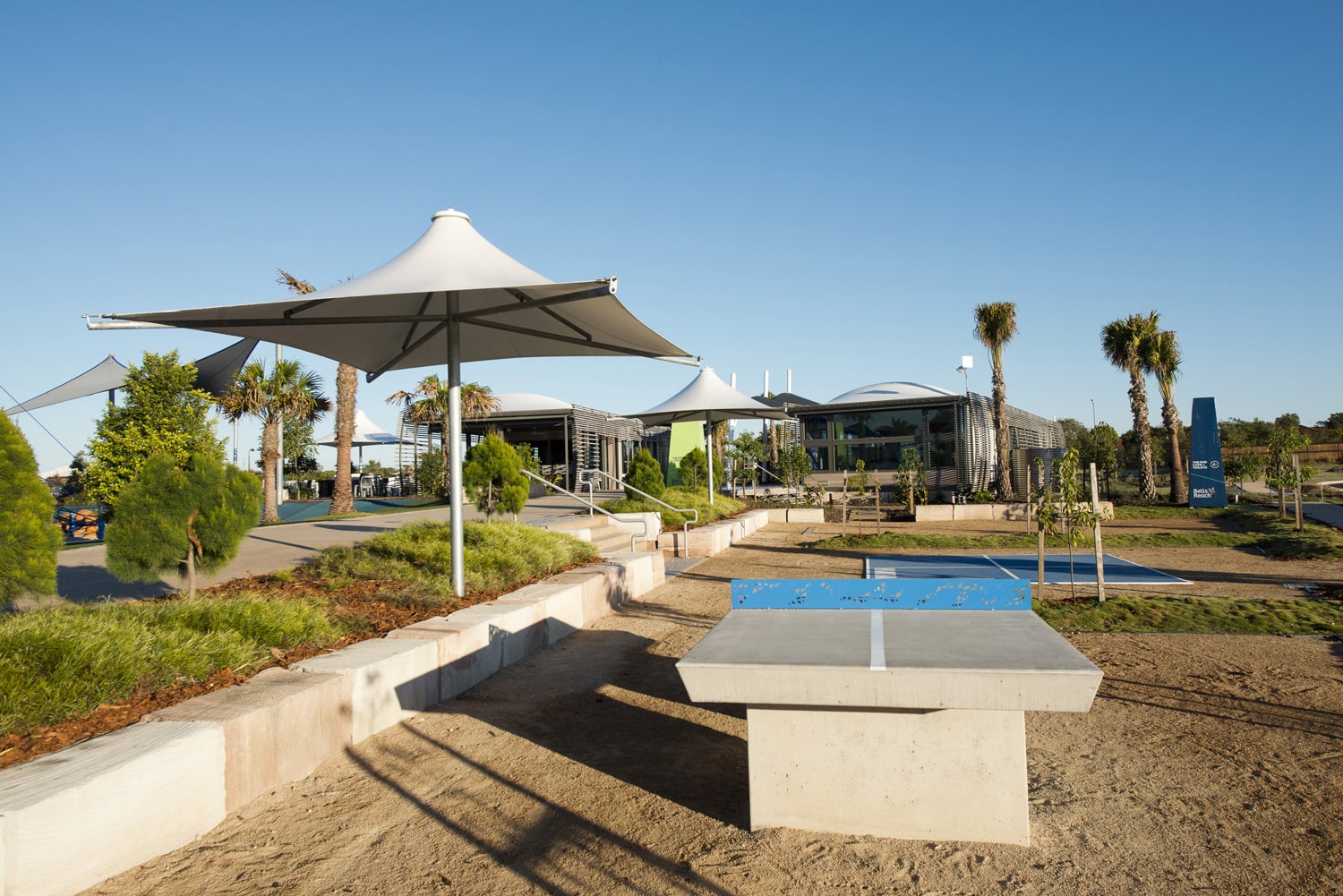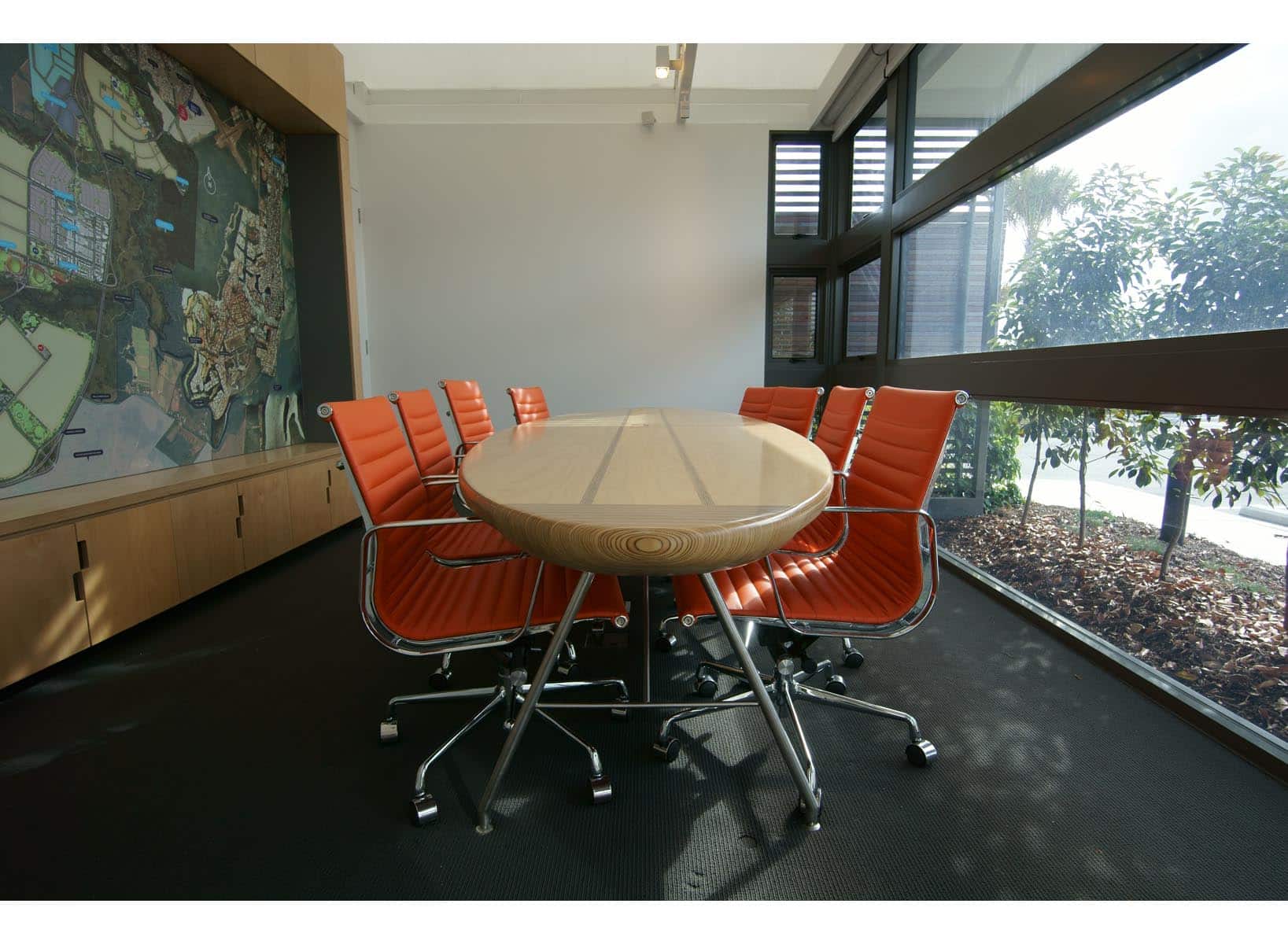Site
The proposed site occurs to the north east of the existing stand of blackbutt, enjoying views of a largely natural environment from the north around to the east and on to the south west. The site has been selected due to it’s natural beauty and significant extent of natural environment and landscape. It will also allow the building to enjoy excellent solar orientation and cooling summer breezes. A large lake to the north, over which the building perches, will further enhance these passive systems.
Strategy / Landscape
The Eco Centre is perceived as an extension of the natural landscape, both figuratively and literally. The flowing organic form of the building plays off the lines of adjacent waterways, the blackbutt forest and the gently undulating topography. A reference to the unique landscape of the sites greater context; the coast, hinterland and the dramatic forms of the glasshouse mountains is also evident. A simple curved gesture, lifting the earth along the line of water and providing simple shelter between the two (the coast) creates the main gallery and research and education spaces whilst the striking and prominent geodesic dome (the mountain) provides a highly flexible community space. The cross section of the building is a pure exploitation of good passive design principles and that age old concept of prospect and retreat, the ‘cave’ and the ‘deck’. The deck becomes a large naturally ventilated public gallery where one can come to learn and to reflect. The cave consists of a ray of rooms tucked under the ‘lifted landscape’ or green roof. These spaces are about more direct means of education and research and the storage and archive of information. Unlike the deck, the cave consists of air ‘conditioned’ spaces achieved though passive systems. Systems such as evaporative cooling, earth cooled pipes and geothermal will all be employed in different ways and in different spaces so that the centre may become a testing machine for the evolution of such technology. All spaces are highly flexible with services designed accordingly. In this way the building may adapt to the changing needs of the community which it serves.
Tectonic / Materials
The Eco Centre is realised through age old construction systems and high tech engineering. Primary materials are earth, hardwood and bamboo. Aluminium, steel and glass, all of which are recyclable, are used to a lesser extent for the high-tech connection details and thermal performance. The large PVC membrane roof over the main gallery space and dome is highly efficient in terms of thermal performance and cost efficiency per cubic centimetre of material. Throughout all spaces, within and around the Eco Centre, landscaping is integrated. The landscaping adds beauty and life to the building but also assists in passive cooling via transpiration and warming via the insulative qualities of earth and vegetation. It is hoped that the Eco Centre is perceived as an example of how organic forms and materials can be realised in a modern and inspiring way. An architecture that speaks of lessons from the past but with a passion for the possibilities and challenges of what lies before us.
Journey
It is envisioned that a journey through the building is simply part of a greater journey through the landscape. Paths through and over the building allow one to experience the Eco Centre in a more organic way than that conventionally offered by such buildings. The educational information is offered through a myriad of stories, each with their own ‘path’. In this way one can come back to the centre many times and experience it as a different path and learning perspective each time. The ‘ray’ like lines of the primary structural grid dived both the primary gallery and also the green roof into a series of bays. Some of these educational stories can utilise that as a means of explaining ecological time lines. The stories can become journeys through time.











